Stories from Rustavi by cosa.cz
Dare to Speak about Rustavi
Always when we asked for any information about the history of modern Rustavi, we got the same answer (as from Wikipedia): “Rustavi is the newest city in Georgia, built in the late 40’s by Russians and their German war prisoners. The city was built to accommodate people working in the newly built Metallurgical Plant and was an industrial centre during the Soviet era.”
“Yes, but what more do you know? Is there any research or a book about modern Rustavi?”
“That’s all, what more do you want to know?“ …………. (silence)






Czechoslovakian and Czech Footprints in Rustavi
Czechoslovakian and Czech footprints in Rustavi are rare, but we found some. Here is the list:
Gustav Husák, the First Secretary of Czechoslovakia, visited the Metallurgical Plant in Rustavi (the photo exhibited in the Rustavi History Museum).
30 9Tr and 1 14Tr Škoda Czechoslovak trolleybuses used to operate in Rustavi.
Restaurant “Praha” with a poster of the Lesser Town Bridge Tower on 28 Merab Kostava Ave opposite the “Berlin Bar”.
Restaurant Premier Bar with sunshades “Zlatá Praha” (Golden Prague) on the 3 Mshenebelta Street.
Two ceramic plates in our flat which were made in the Czech Republic.
Bára and Markéta in May 2019 in Rustavi.
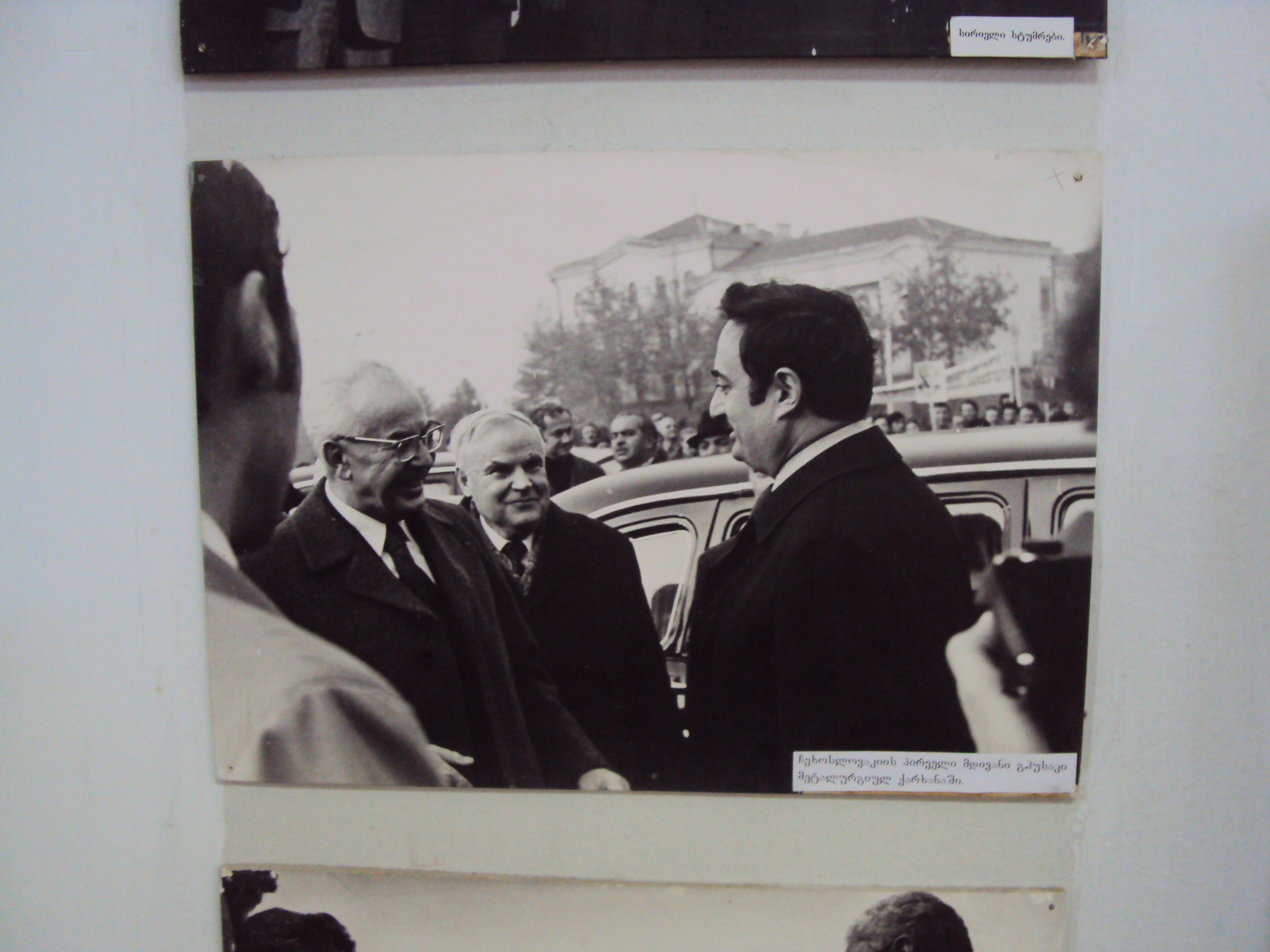





Smoke Above the Plant
We set off on a 12-km journey around around the so-called Rustavi Metallurgical Plant, where they produce hot rolled seamless steel pipes for oil and gas industry, rebars of different diameters and Portland cement. The main entrance to the Rustavi Plant is at the end of the Rustavi city axis and it is just the beginning!
We rode along:
two prisons, one of them is the Complex of General and Strict Regime Prison № 2
Tube Rolling Plants
Solo Cement
turn-off to the limestone quarry at the riverside of the Kura (Mtkvari) River
Rusmetali, Ferro-alloys manufacturing – produces Ferrosilicon manganese, Ferrosilicon, Ferromanganese and Ferrochromecement
HeidelbergCement Plant, the biggest cement plant in Georgia
Chemical Fertilizer Plant Azot Rustavi,produces eg. ammonium nitrate, fertilizer, mineral Acids
Rustavi Chemical Fiber Plant, produces chemical fibres
GeoSteel, the producer of steel
On our way back home, somewhere close to manganese mounds among the remnants of a destroyed factory hall, dogs normally friendly and calm were so vicious that their owner had to save our lives. It might have been the bikes which provoke them. We rounded off our small safari trip in the middle of the Rustavi industrial zone by bumping into a flock of sheep.
The Roadside Picnic isn’t science fiction here. This book (written by Strugatsky brothers and made into the film Stalker by Andrei Tarkovsky) is reality in Rustavi.
The factory environment was horrible. It’s better to google it than to see it with your own eyes. We wished the same thing as Redrick Schuhart, the main character of the Roadside Picnic book, “Happiness for everybody, free, and no one will go away unsatisfied!”
Even the policemen we met during our journey were asking us if we needed some help.




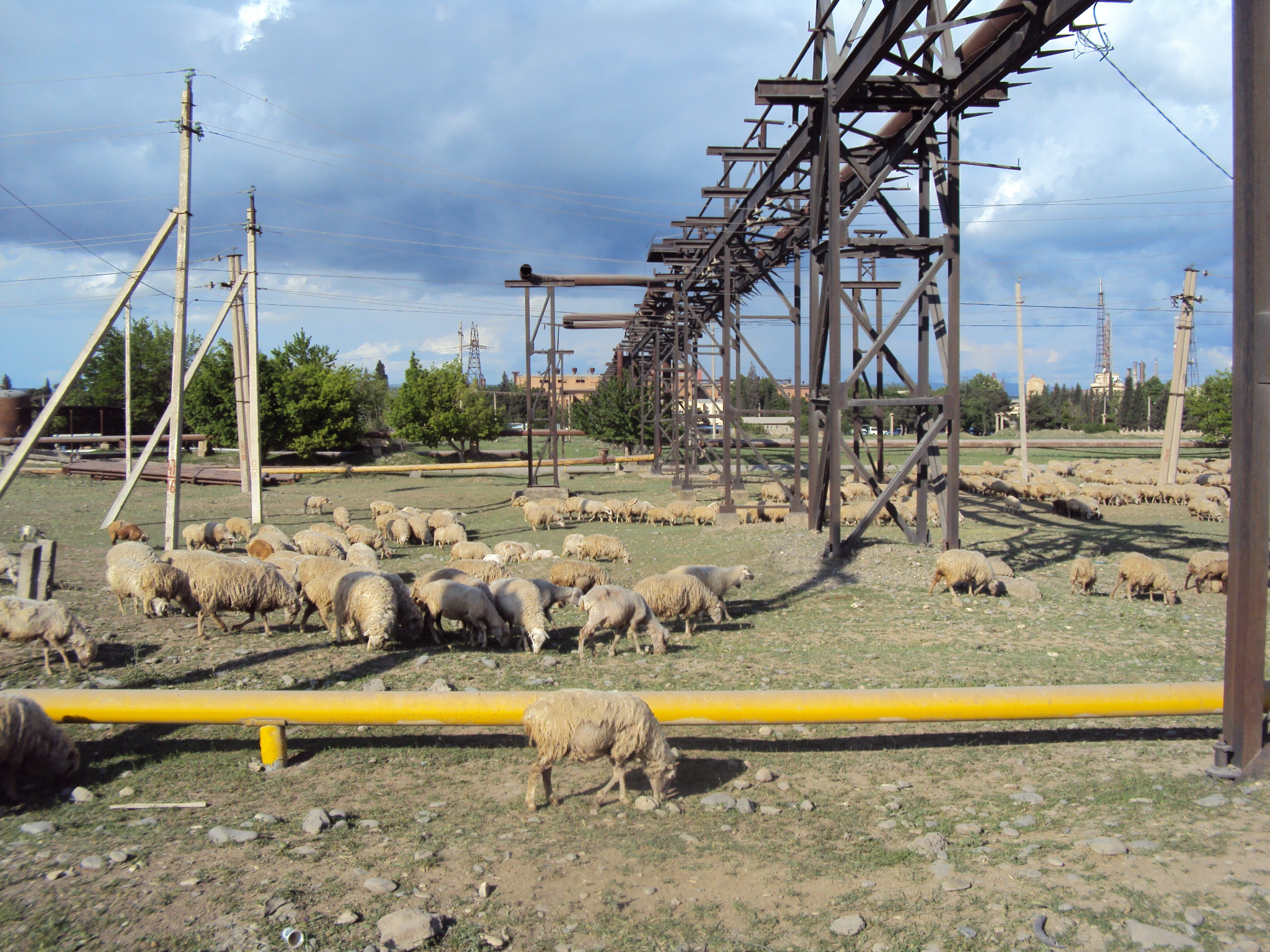




Disappearing History
Photographs of Rustavi from the Soviet era in the Rustavi History Museum are slowly fading out and the whole exhibition of the modern history of Rustavi is currently covered by white panels. As if they wanted to forget.




“Grey_šedý, sky_nebe, grey_šedá, mind_mysl”, is what we wrote on the concrete fence of the Rustavi Plant. The poem was written by our friend “Concrete Grey Milan”.

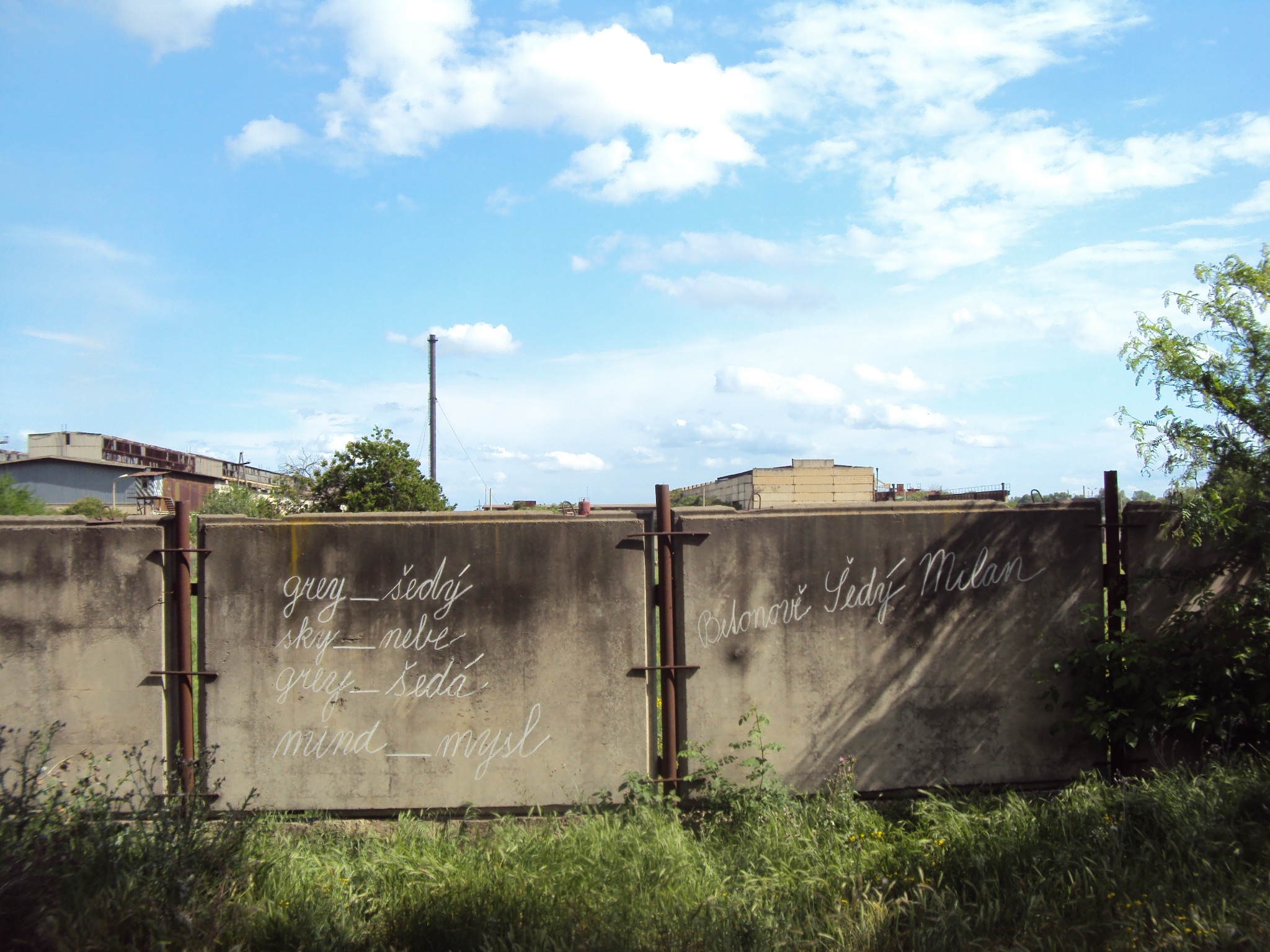
Cement City
One day the prevailing western wind became an eastern wind and filled Rustavi with the cement dust.

Darkness in the Corridor
Corridors and staircases of Rustavi apartment buildings are dark, abandoned and open air as the windows and doors are missing and as there are no lights in corridors. Once, we arrived home and the light bulb above the flat entrance door in the corridor was switched on! We were surprised and we thought that our neighbours wanted to make us happy and they wanted to show us, that if they want, things can work. Later on we found out that the switch for this corridor bulb is inside our flat and we only had switched it on accidentally. So, you have to switch on your corridor light when you leave the flat to have the light on when you come back.
On the other hand, doors and windows of flats are brand new, lights are functional inside the flats and cars parked in front of the dilapidated buildings are shining.



Lights Have Already Bloomed
The main Old Rustavi axis – Merab Kostava Ave – leads from the bridge through the main square to the main entrance to the Metallurgical Plant. The Soviet blooms are faded, some (Georgian ones?) are blooming and the newest blooms are guarded by Azerbaijani president Heydar Aliyev in front of the entrance to the Plant.
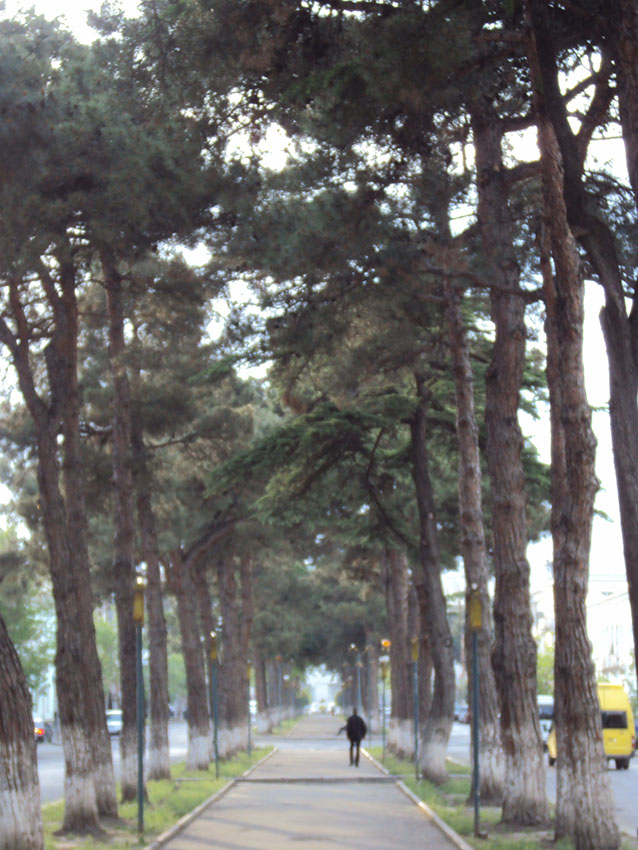

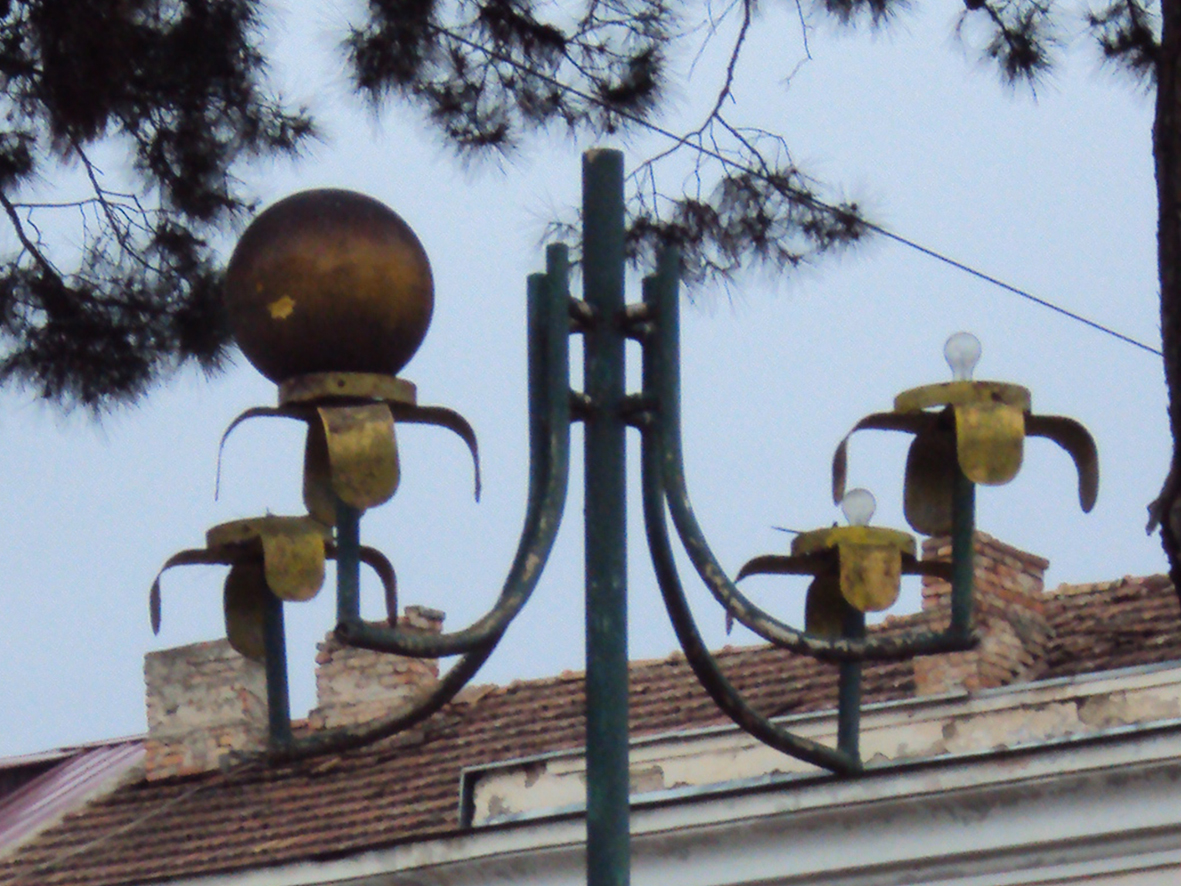

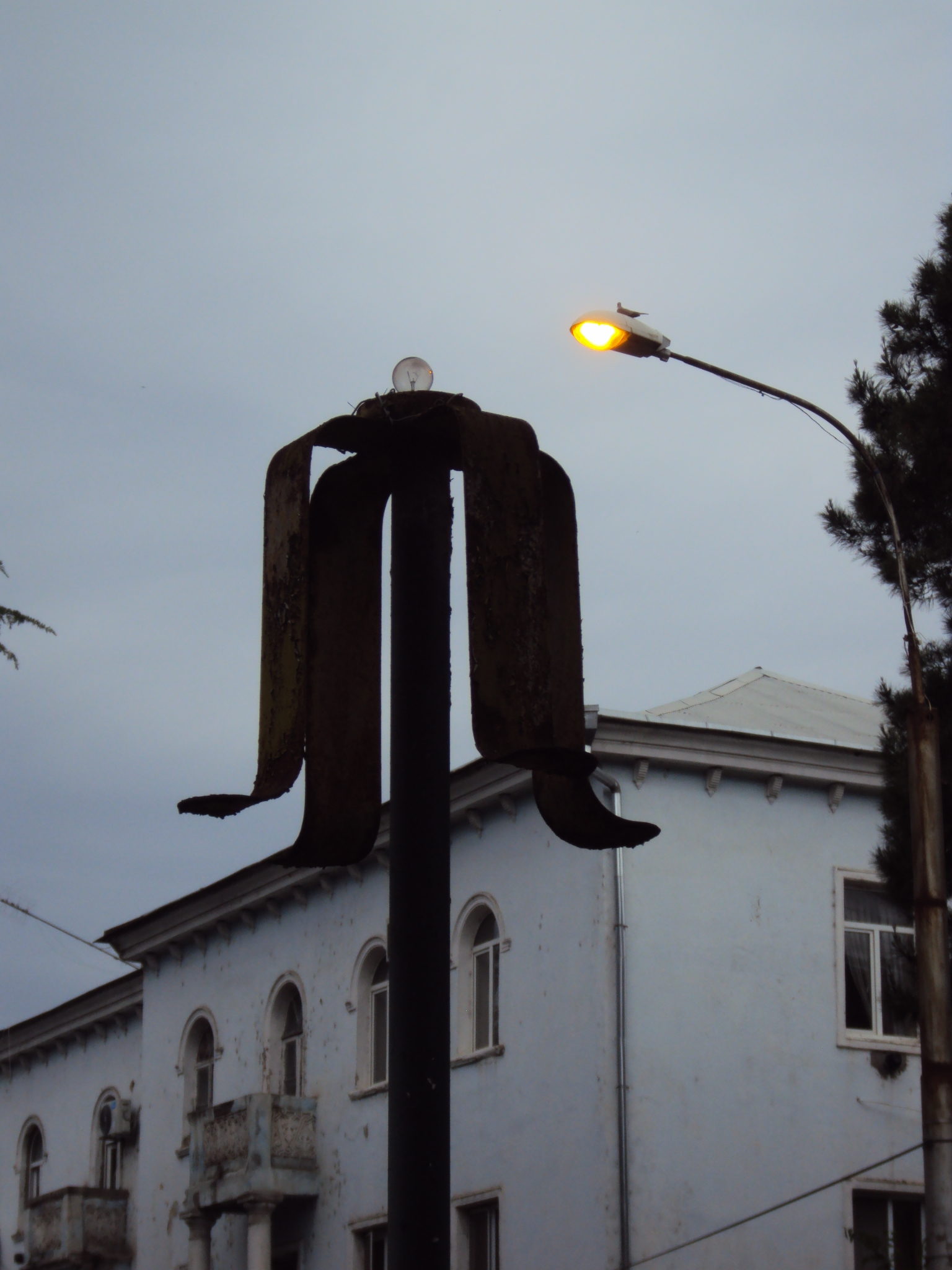

The Children’s Railway
Between new and old Rustavi used to be a railway theme park for children; it measured five kilometres when it was launched in 1986. Nowadays a swamp is thriving in the middle of the railway loop where Cuckoo lake used to be. We fearlessly walked along the railway embankment towards what used to be a bridge and central station with one platform and a tunnel. On the embankment we met a sunbathing snake, probably a grass snake, but ten times bigger than grass snakes in the Czech Republic. We saw many birds, heard frogs, there were fishermen by the lake. Nature is slowly but continuously taking everything back. Next to the railway we met people from an airsoft community. They have their battle playground next to the railway. They invited us to try to shoot at a target, asking: “Have you ever fired an airsoft gun?”
“No, we have not,” we replied.
“Or a real gun?” …………. (silence)

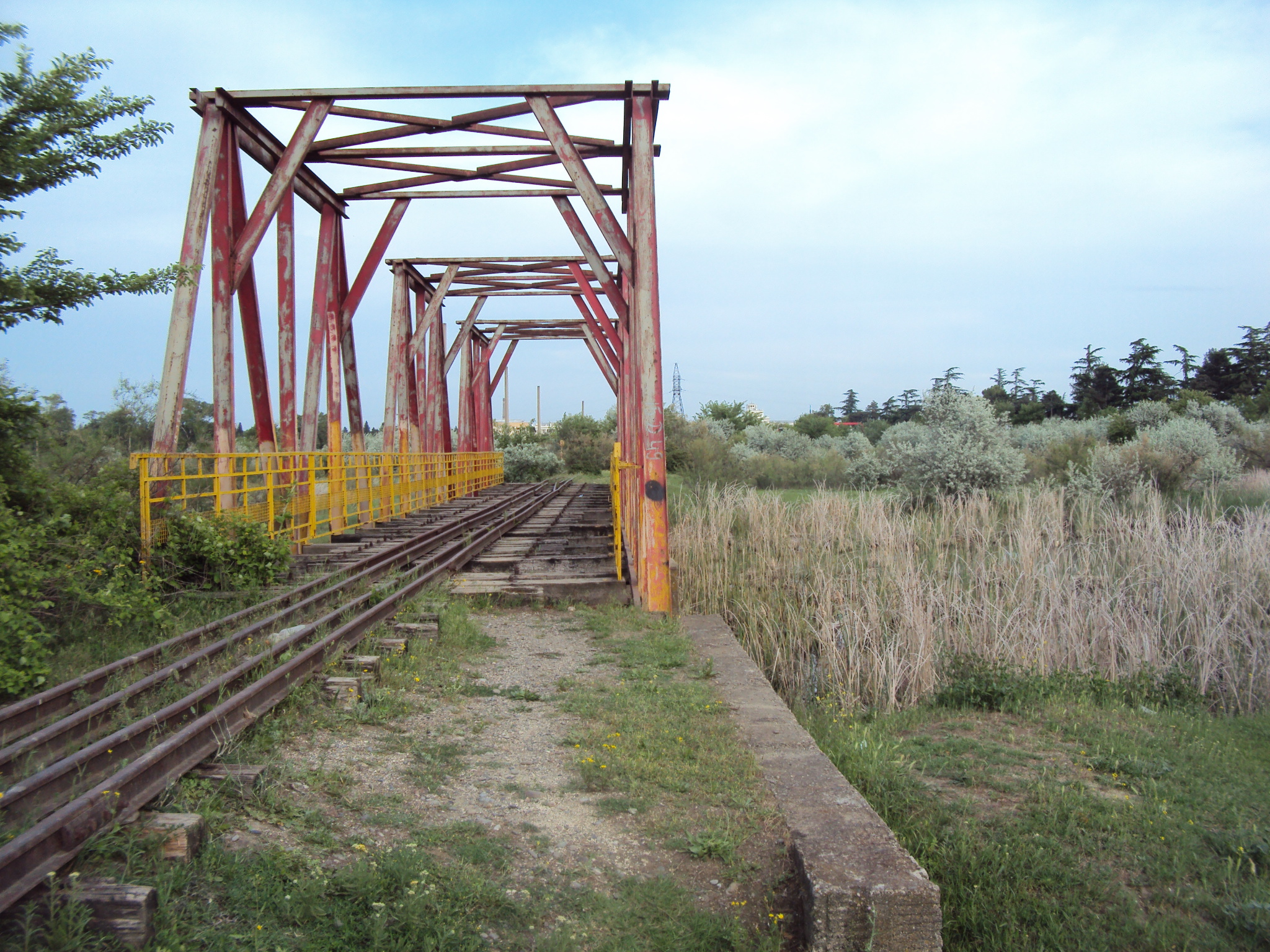

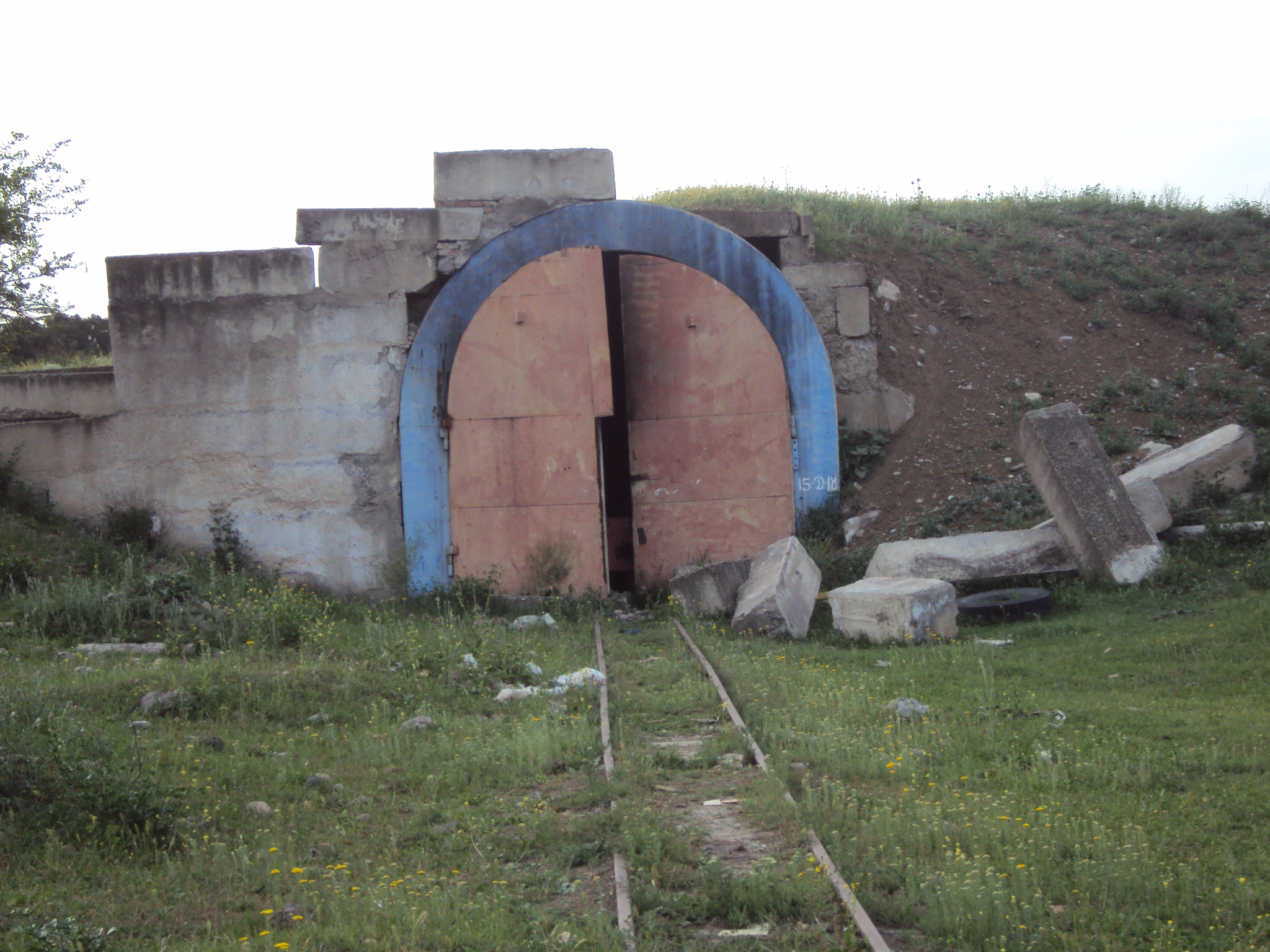

Gaachere – Forward to the Past
Rustavi used to operate its own trolleybus service between 1971-2009, but the buses got lost somewhere at the scrapyard inside the Metallurgical-Zone. Lately, marshrutkas have entirely conquered Rustavi so-called public transport. Under the motto “forward to the past” you see every morning hundreds of people trying to catch the nearest marshrutka – people are going east to get to west – to Tbilisi. They have to go against their direction to catch the passing marshrutka, before the others catch it.
In the evening, the story repeats on the journey from Tbilisi to Rustavi.
You can catch one close to the House of Justice – a house in the shape of big white wilted mushrooms. The problem is, that all marshrutkas from Tbilisi to Rustavi are full in the evening, which means at least 26 persons in one Ford Transit. If you are not from Rustavi or Tbilisi, you cannot know where a good place for catching marshrutkas is. One day we were trying to get on marshrutkas for more than one hour. Finally, we gave up and we called a taxi, but the taxi driver thought we were going to Rustaveli street in Tbilisi. After one kilometer he kicked us of the car at an even worse place. Then we tried to catch marshrutkas again. We finally arrived in Old Rustavi with an intermediate stop in New Rustavi.



Tree Bus Stops Are Unfaithful (მოღალატე) and Green
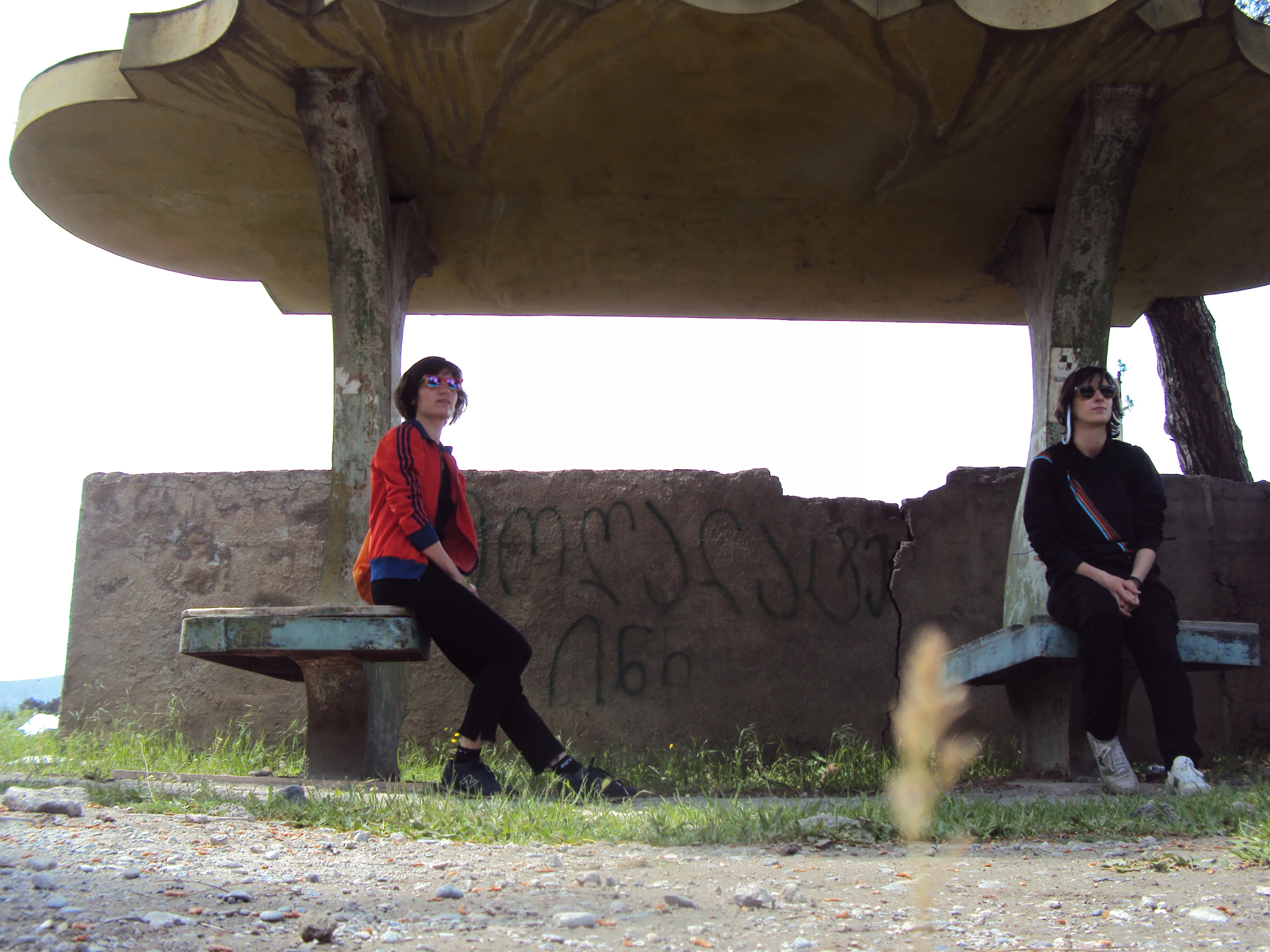

Art Stars in Rustavi
Once we were approaching what used to be (and maybe still is) the Rustavi Railway Station, we had the feeling that the site was under construction.
“I think they are bricking up the door to the Rustavi Railway Station.“
“No, it’s Christo and his new art piece for Old Rustavi.”
New Rustavi didn’t want to be left behind. We think they ordered an artistic masterpiece from the sculptress Rachel Whiteread. She has just finished her formwork for her newest art piece. After concrete is poured in and the original prefab estate is removed, it’s done.



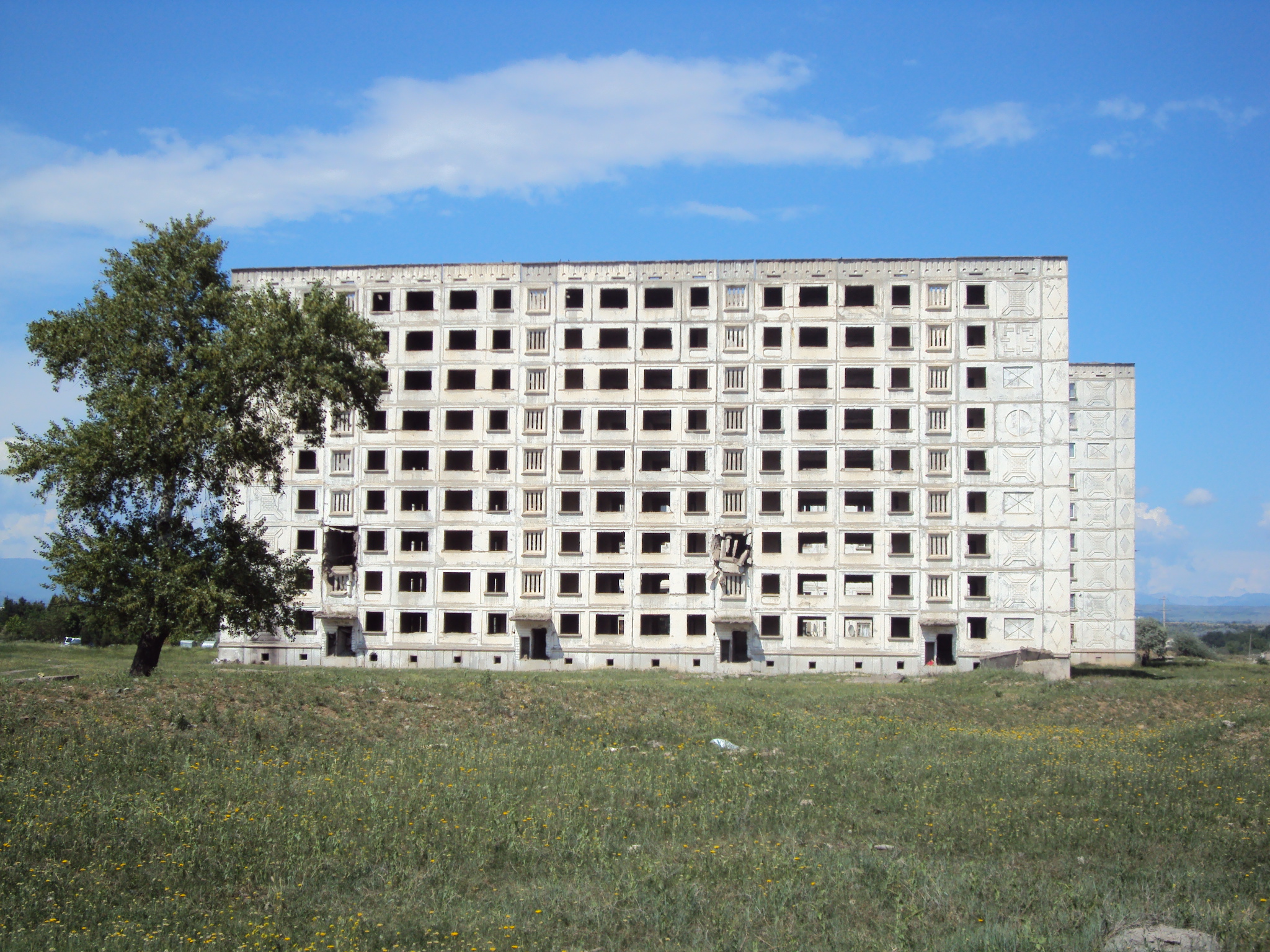
Nature Is Taking It Back
Because nature is very spontaneous here, a lot of vegetation is sprouting from all the human-made things: railway stations, playgrounds, “the Louvre Pyramid” by the entrance to Old Rustavi, bus stops, children’s railway and animal cages. Nature is taking it back and turning them into green monuments. …Maybe it is a secret preservation plan for Soviet era monuments and buildings, which are continuously disappearing. When somebody realizes that Rustavi is unique and valuable as a whole, only bushes will be able to talk about the history of Rustavi.








With Love from Georgia to Azerbaijan
During a morning travel in marshrutka through Tbilisi, you can see tons of plastic bottles and waste floating on grey-brown waters of the Kura River. It’s a gift to Azerbaijan, they say. And later on, Azerbaijan donates it to the Caspian Sea. And in the Caspian Sea it is shared by Azerbaijan, Iran, Kazakhstan, Russia and Turkmenistan. Common sense of sharing still exists.


Rustavi Is Both Pure Artificial and Rich Organic






Plane Trees Show Peace (✌)
The remains of plane trees in Old Rustavi have adopted the V gesture. Maybe trees refer to “victory” or “peace”, but their V gesture could also convey “the horn fingers”. They might have become fans of some Rustavian heavy metal group, or they just want to express that people damaged them by cutting them, so they might as well be showing the fuck-off gesture.
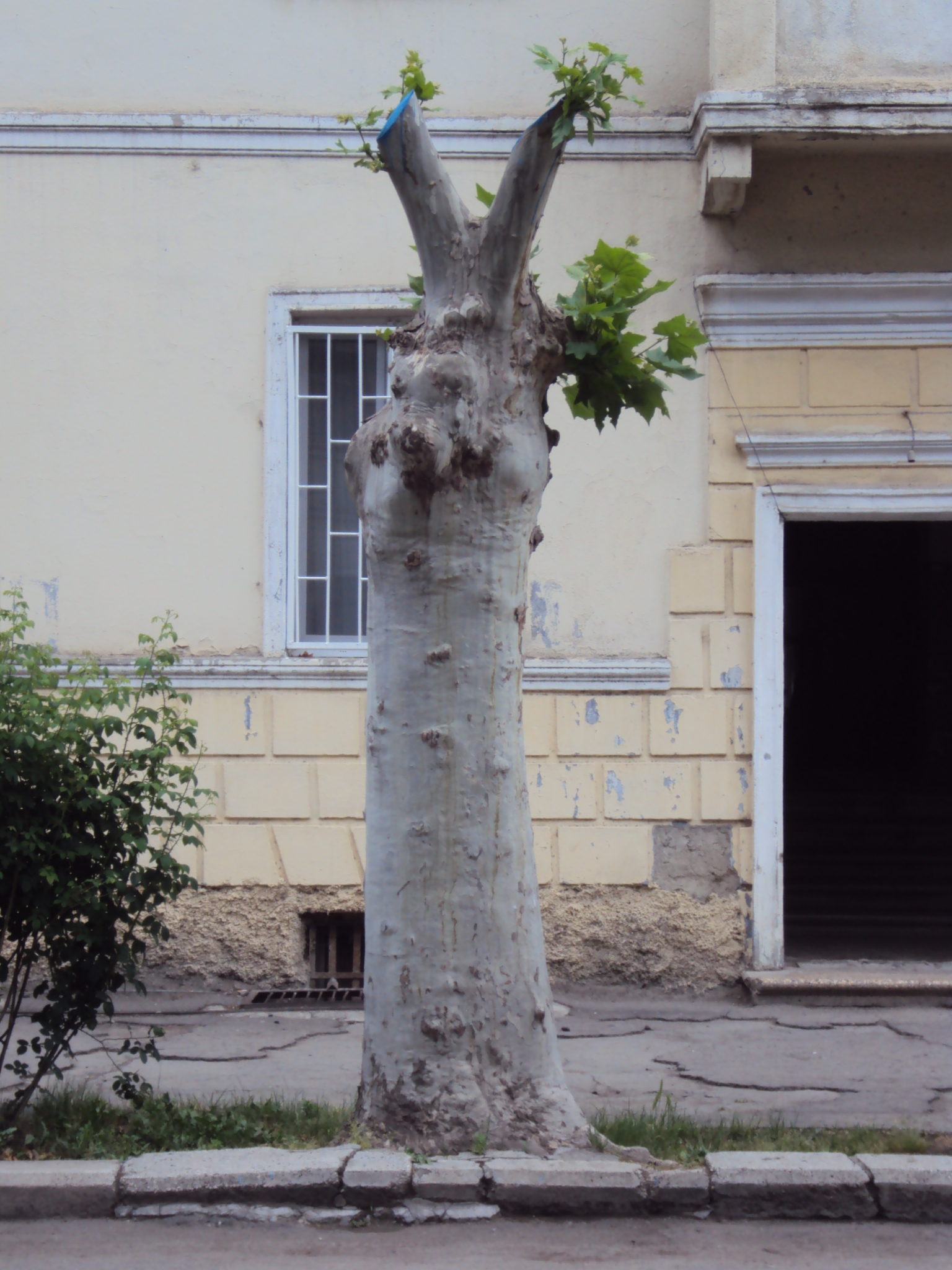





Creative Balcony Design and Formation Is Apparently Multicultural and Internationally Shared Skill
Express yourself by progressive balcony development strategies. Surprise your neighbour, create more space for you/or your family. Your balcony for sure needs a redesign. Start with a simple extension of your balcony area. Boxes of sheet metal can be added on the sides, brick walls are also possible. You can turn your balcony into a room and add one or two windows. If you have a flat on the first floor, you are lucky, because you can add a whole small family house and park your car under it.






Sleeping City
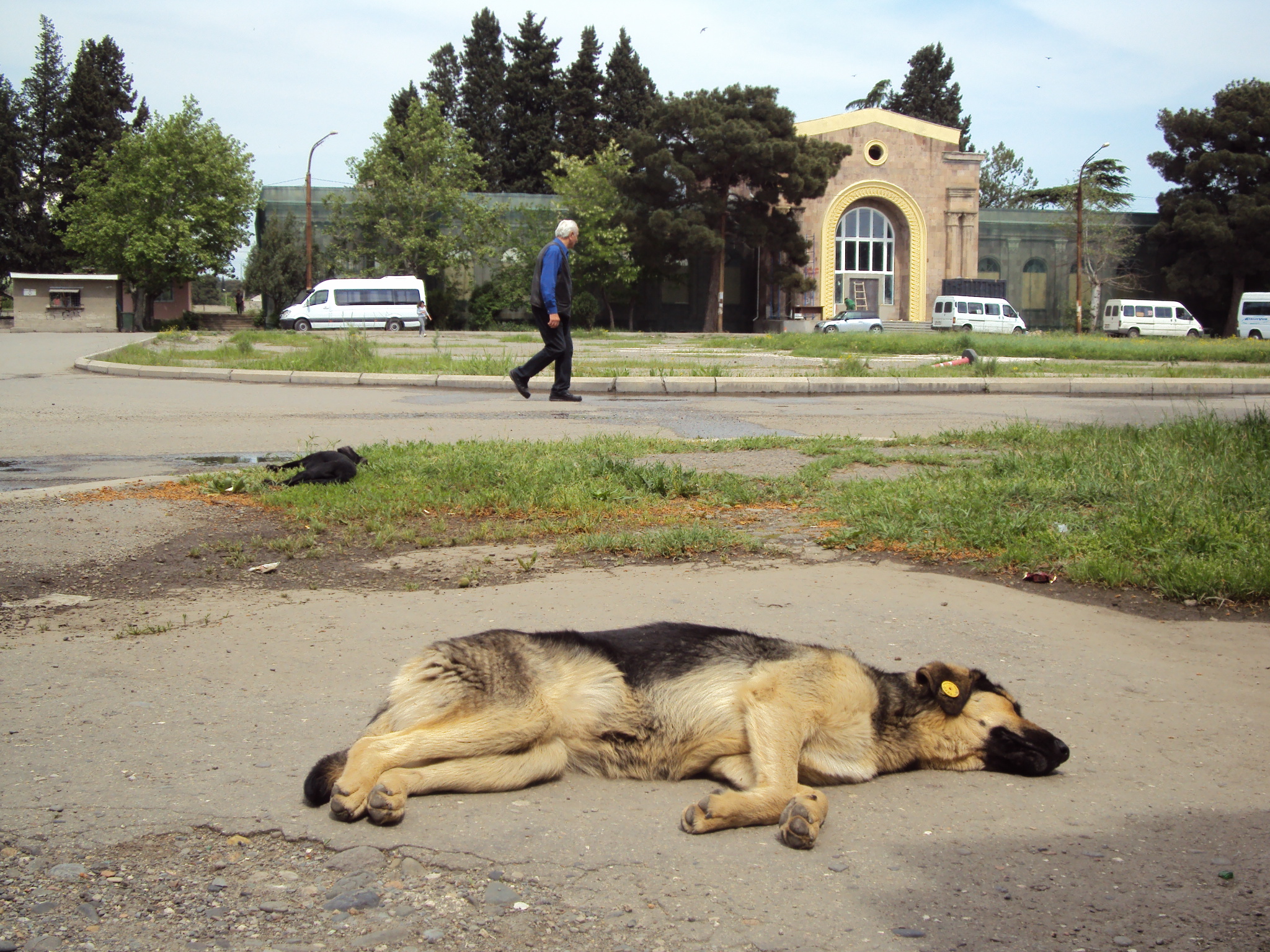

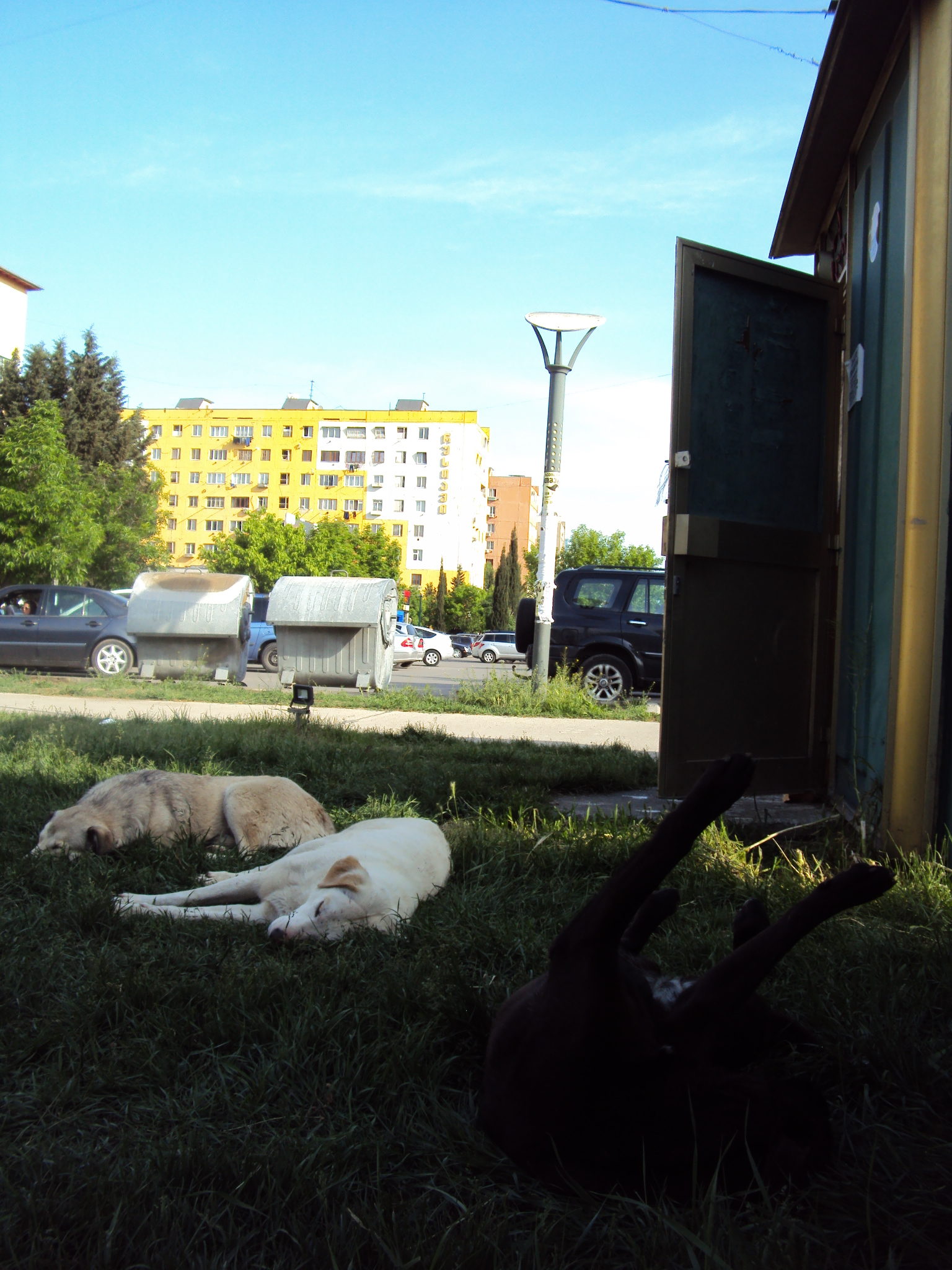
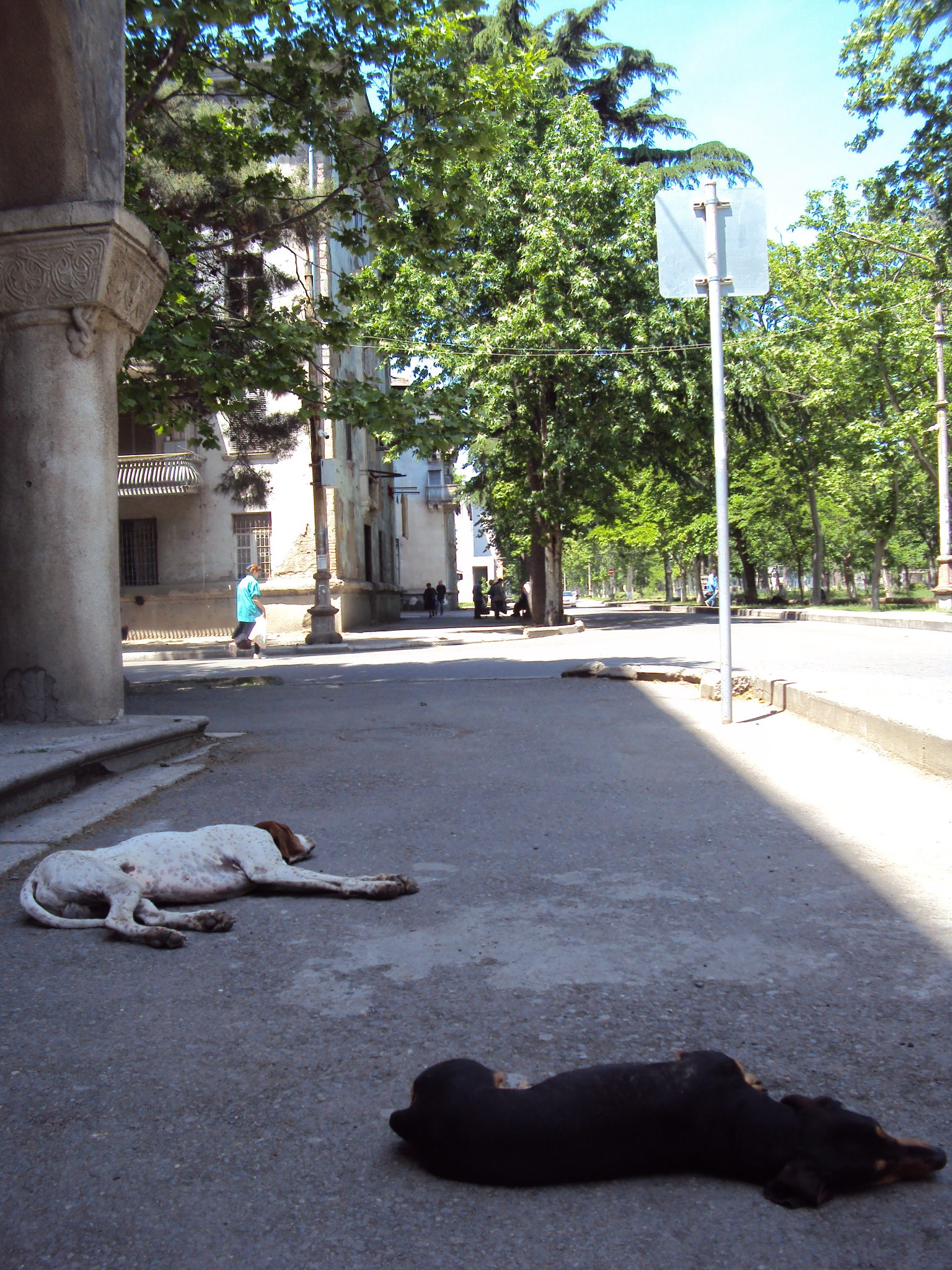
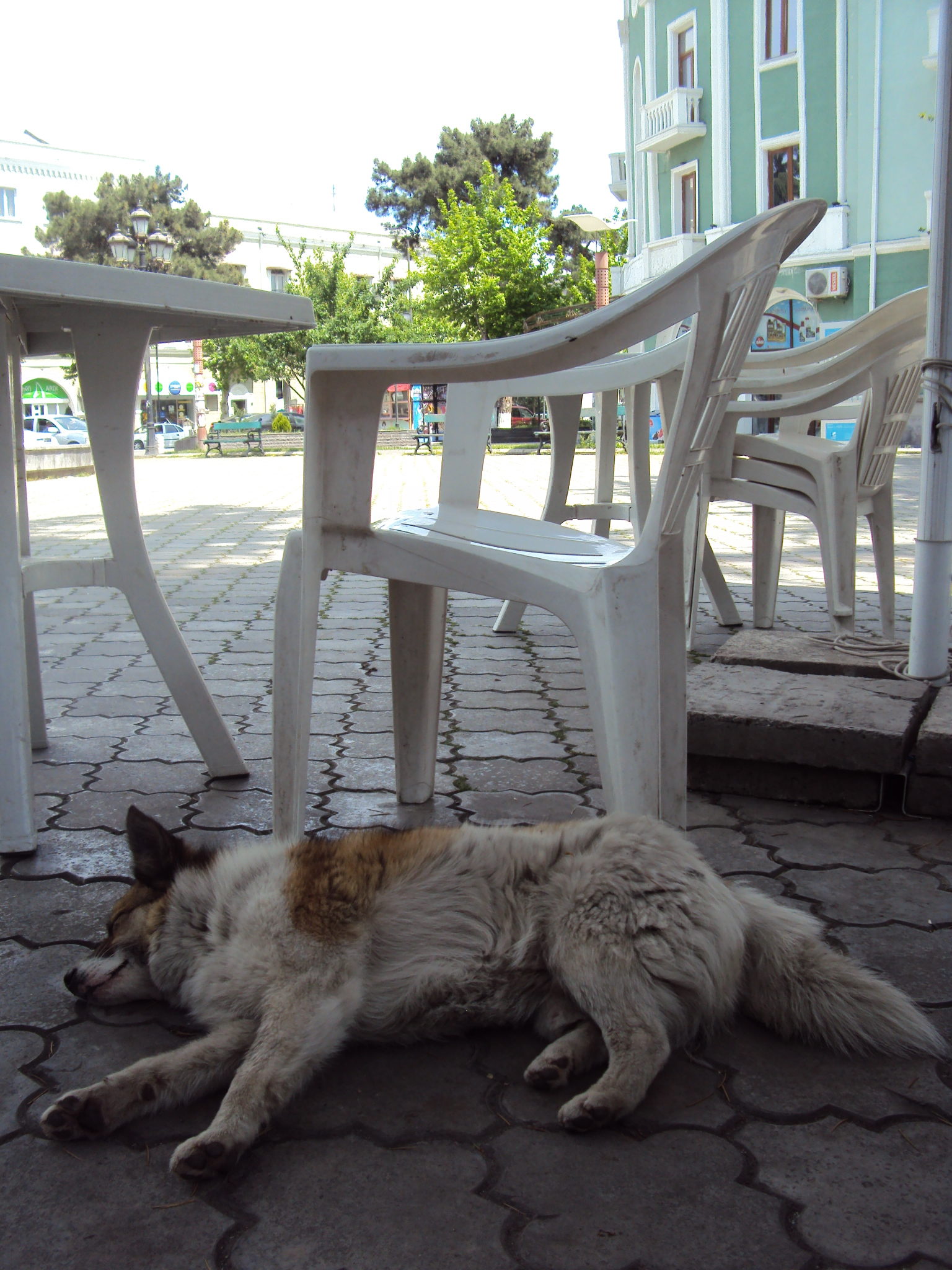

… and Rustavi Blinked at Me

Special thanks to: Tamo Bitchashvili, Marika Jabua, Tornike Jishkariani, Tamar Muskhelishvili, Leo Soselia, Wato Tsereteli
A series of comments and stories from the present and the past are inspired by everyday life in Rustavi and its unique architecture. Short illustrated stories are based on authors’ day-to-day experiences, observations, descriptions, work and unusual troubles.
The stories were written during a 28-day artist residence in Rustavi and were presented on Saturday 25 May 2019 at 7 p. m. in the Obscura’s Temporary Studio /Café Stamba, D Block/ in Tbilisi.
“It Looks like It Cannot Work Like This and Indeed It Mostly Doesn’t … but Somehow It Does” was commissioned by The Center for Contemporary Art – Tbilisi for Creative Europe Platform “Magic Carpets” using funds provided by the E.U.

